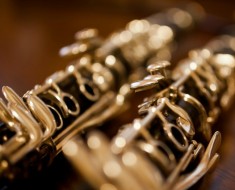My only reason for putting these very different regions together – Extremadura near to Portugal and Aragon in north eastern Spain – will become plain.
Aragonese culture finds its roots in Celtic, French and especially Moorish influence. Instruments include rattles and the guitarro, a unique kind of guitar from the Baroque period. Rarely used as a solo instrument, the guitarro mostly has five strings and Alexander Sanchez has recovered one of the earliest examples from Zaragoza. Early music in Extremadura is characterised by a melancholy sound and by the predominance of the zambomba drum which -intriguingly – is played by pulling on a rope inside the drum. (How I wonder?). Perhaps the sadness of their folk music reflects the fact that this is traditionally Spain’s most impoverished region, many of its people leaving for Latin America, and taking their musical traditions with them.
It’s Jota music that unites these otherwise very different regions. Originating in the southern part of Aragon this dance music with its changing tonalities and complicated repeated rhythms is popular across Spain.
Played on tambourines, castanets and flutes, the music also uses the human voice as an instrument. The Jota Zaragozana is fast and danced with raised arms, whereas in southern Aragon the music is slow and elegant. In Extremadura the Jota is played with triangles, castanets, guitars, tambourines, accordions and zambombas.
Next post – Castile, and then, though we will come back to regional variations at some later date, we can move on to other matters. By the way, my sources in these posts are from the New Grove Dictionary of Music (NGDM) and masses of stuff on the internet, one of my sources being http://en.wikipedia.org/wiki/Music.




A very helpful site, to make us think more about Spain and their contribution to the world of classical music. Keep it going!
Thank you for youyr kind comment. Hope you are able to keep in touch with how we are going.
B.R.
Do you know how important is this kind of music in Spain right now, I know they have «flamenco» and «sevillanas» but, never heard about this, and looks really interesting.
Thank you
Hello. I am sorry I can’t help you, but I expect that like folk music generally this may be an influence on music rather than widely practiced in its pure form. It certainly infuenced composers like Bizet, Glinka and Liszt. The music often has a melancholic feel, especially in Galicia, where I imagine it continues to be a popular form of music.
B.R.